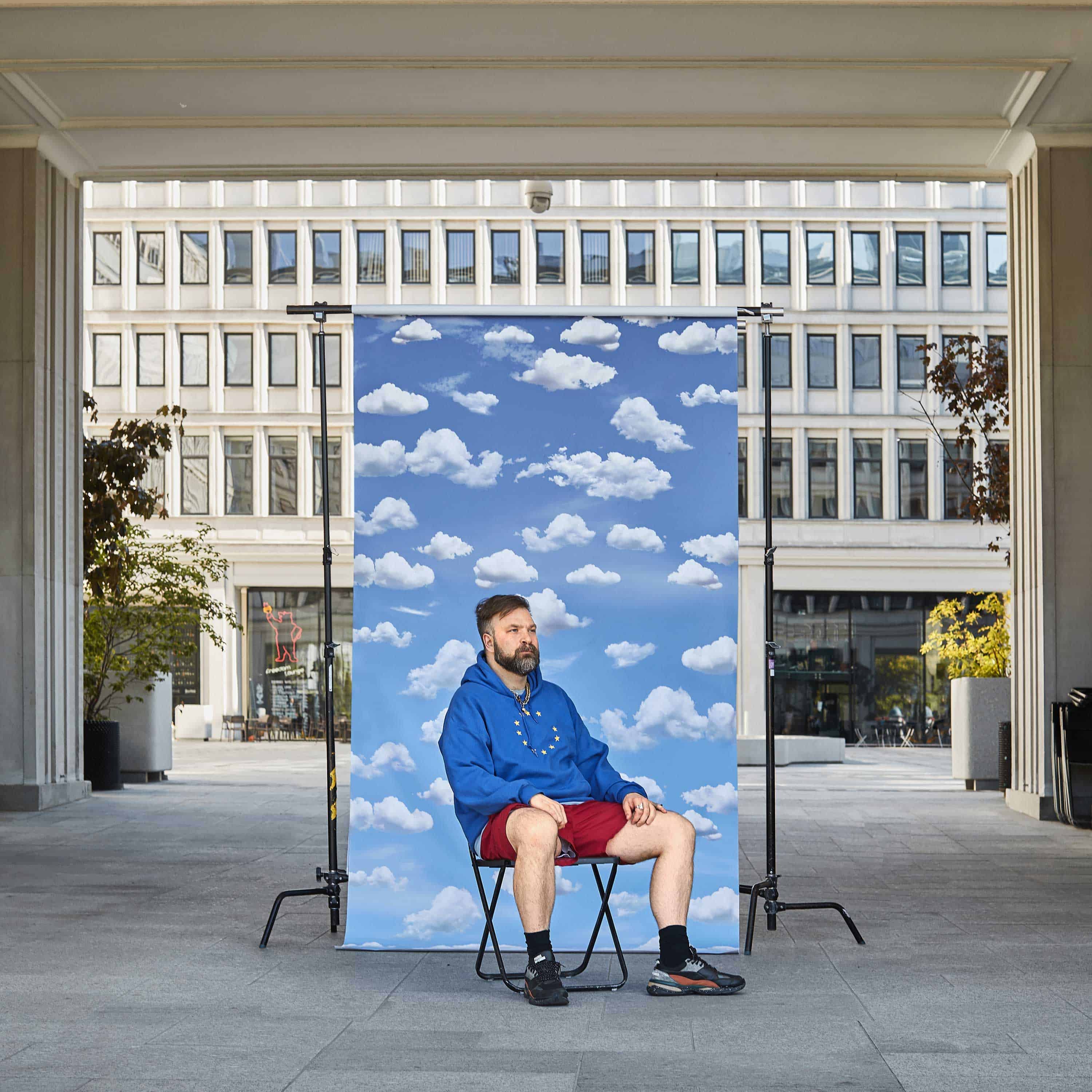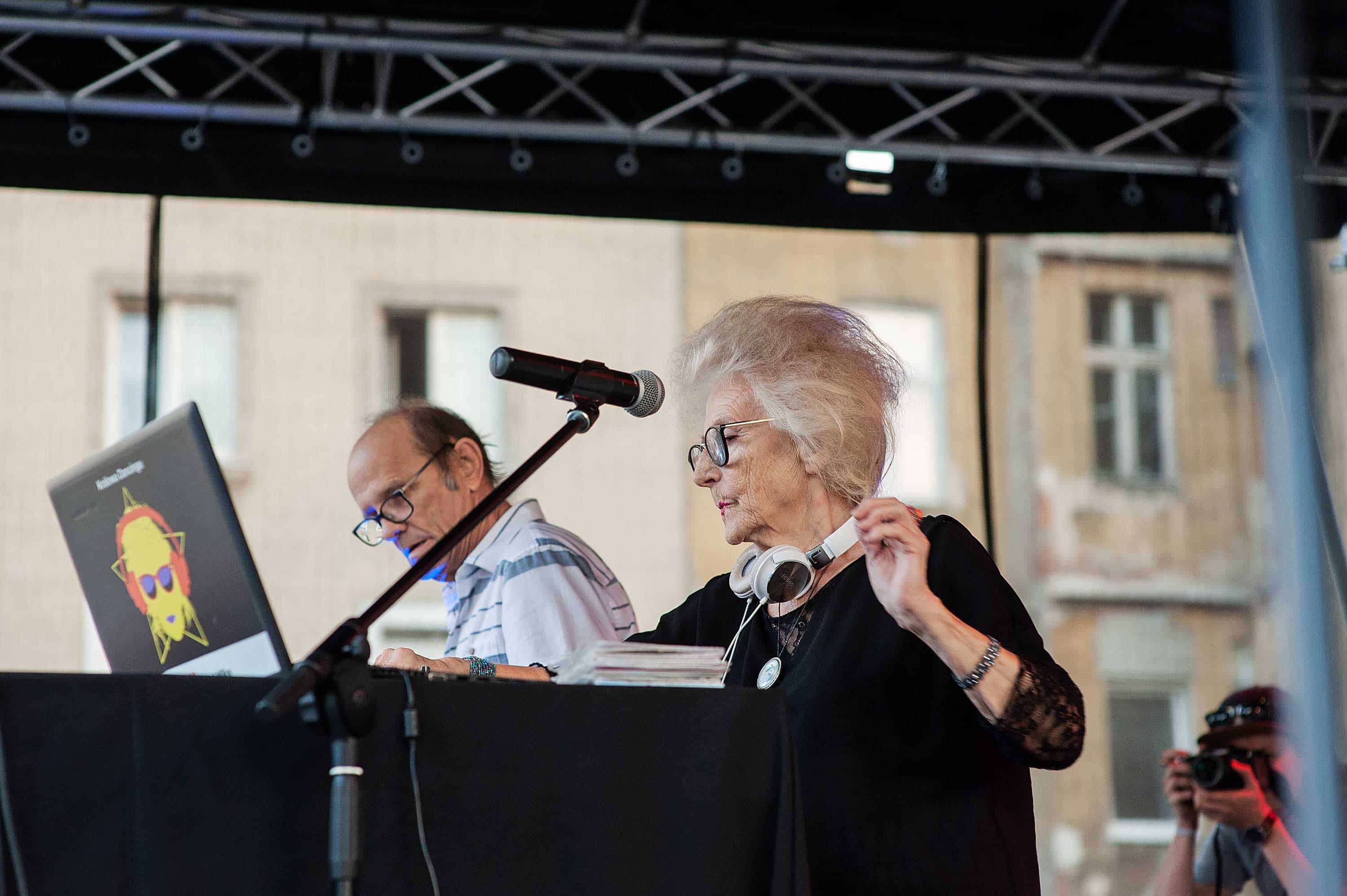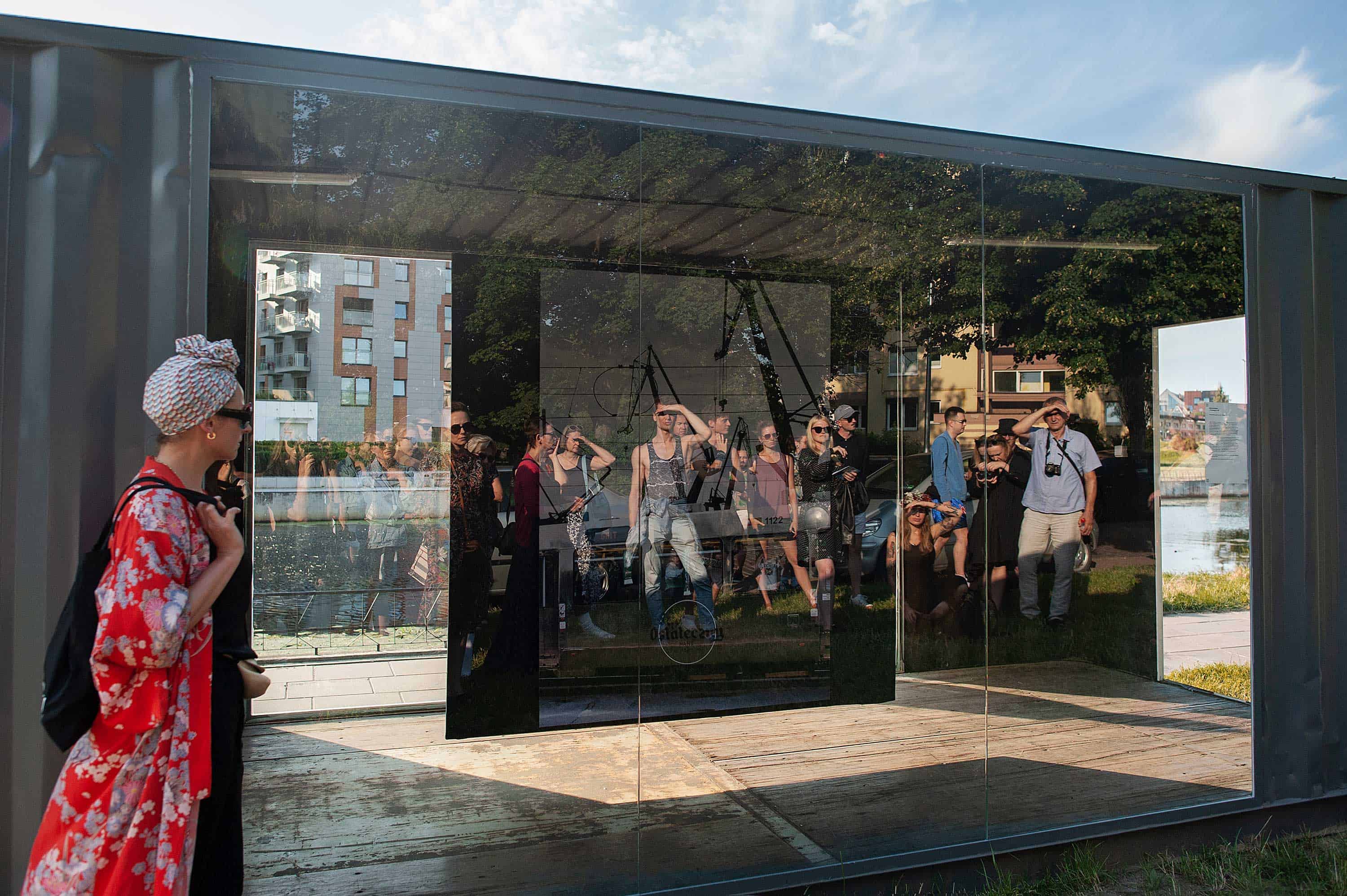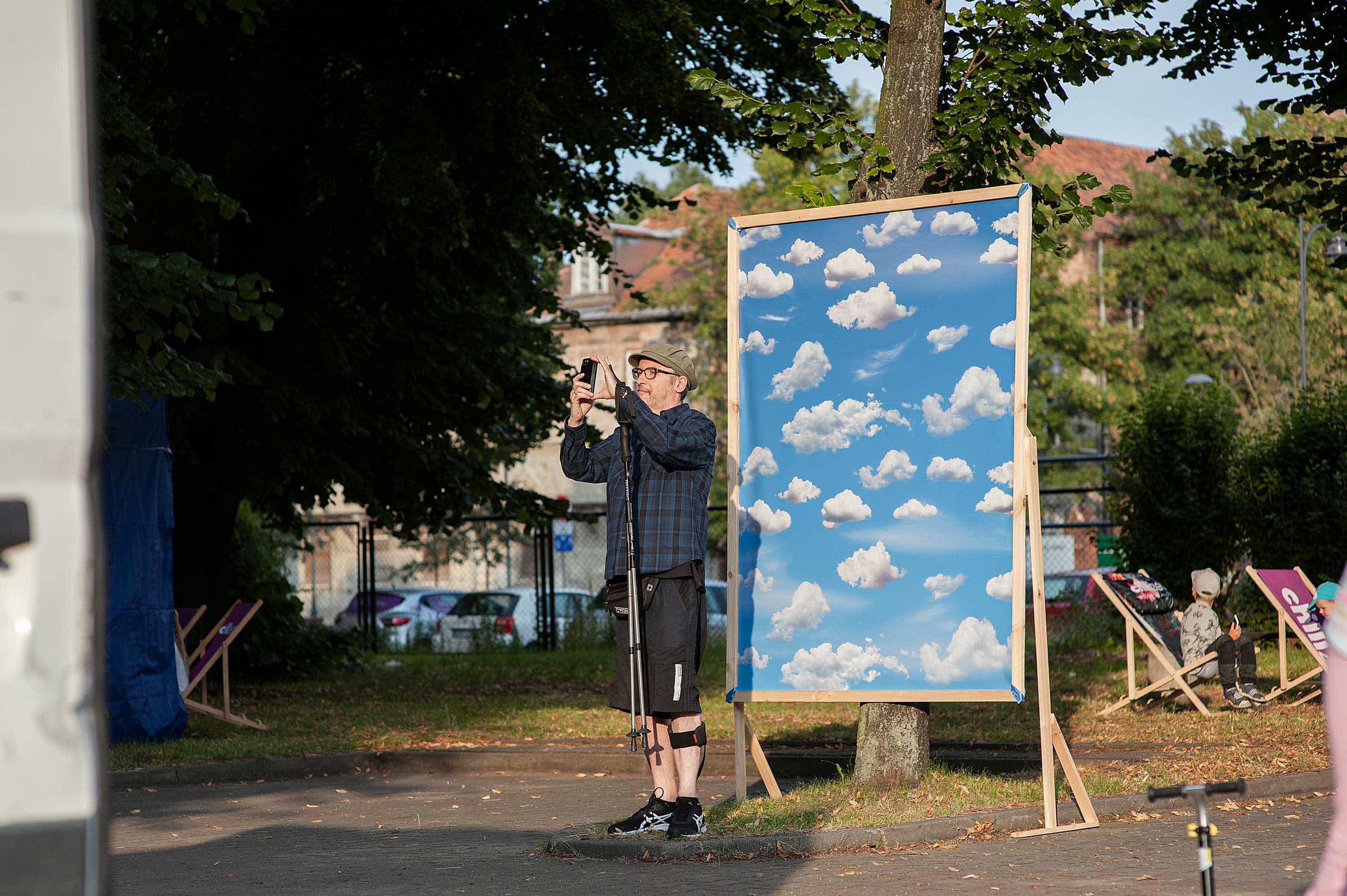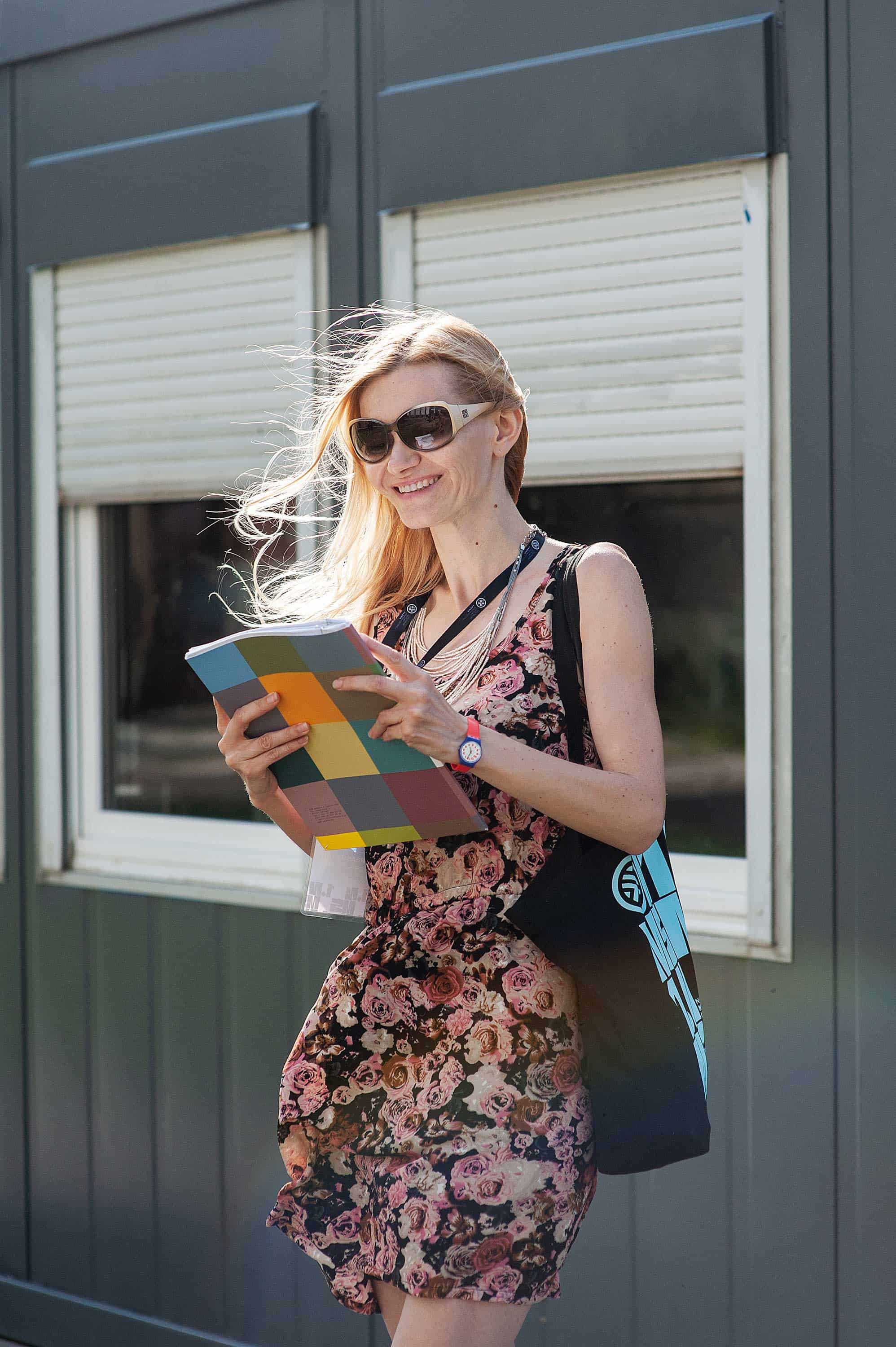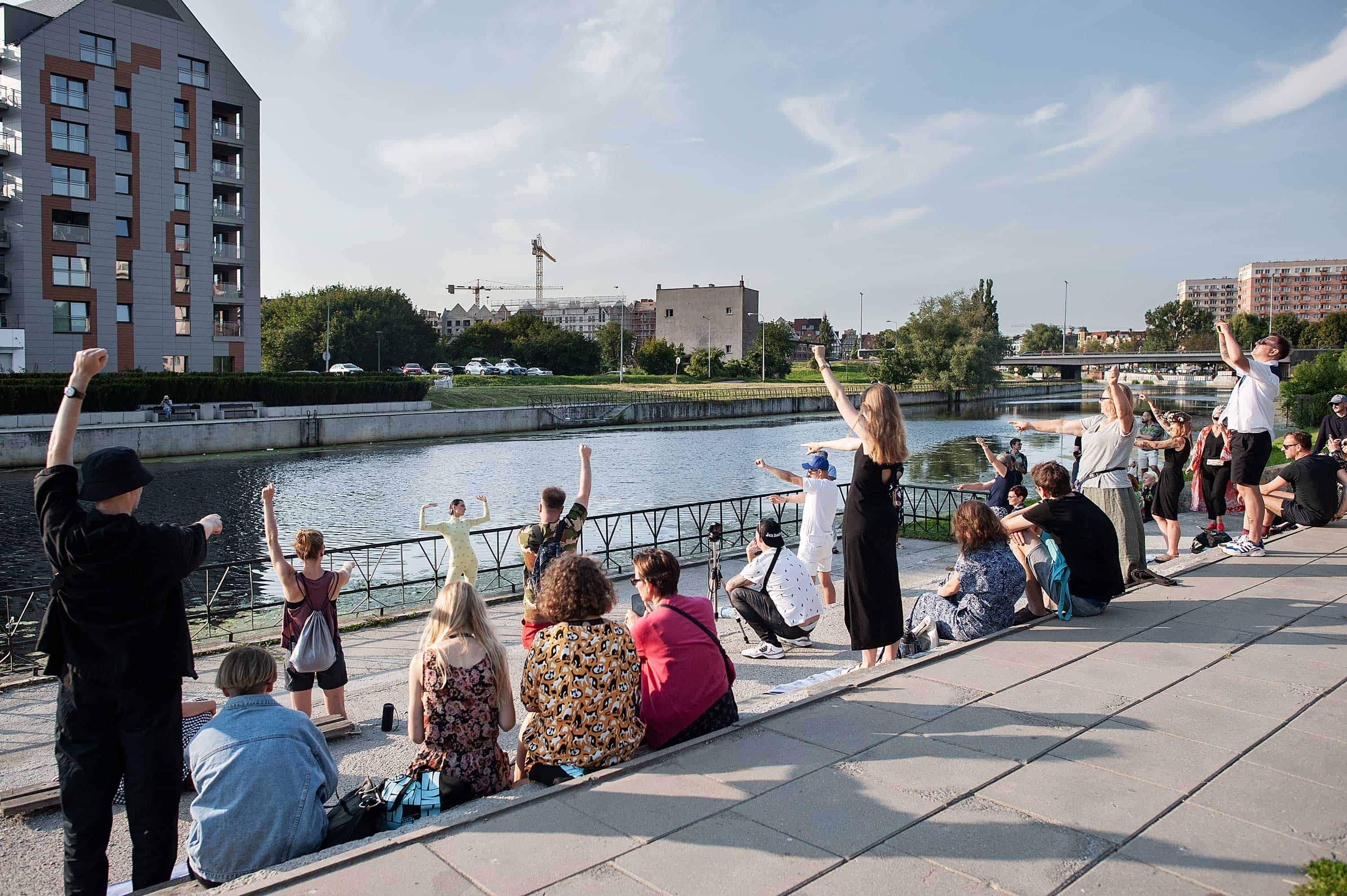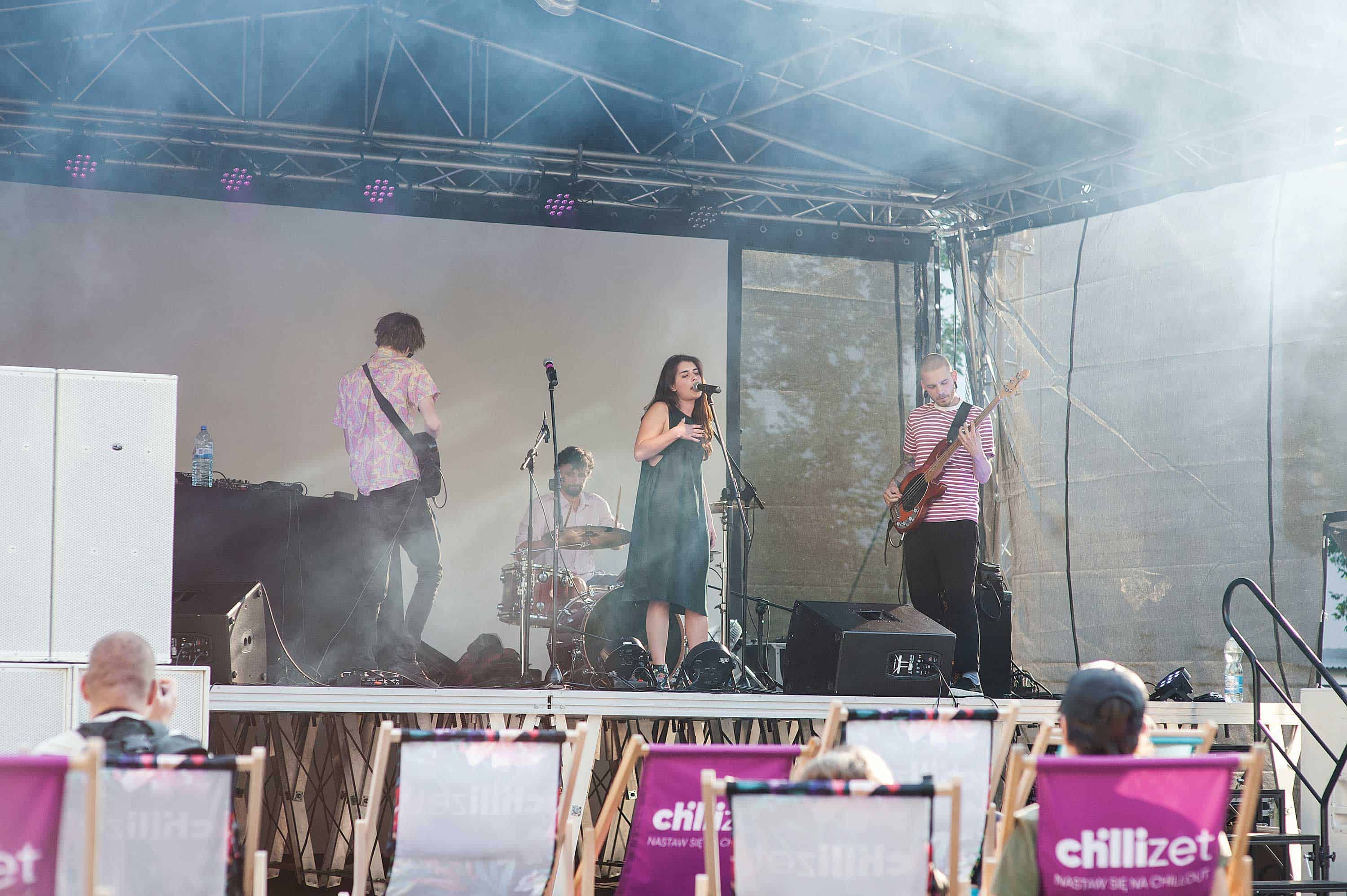“Art and the City” is the pilot edition of a non-festival organised by the “Łaźnia” Centre for Contemporary Art. The event takes place in Gdańsk over the summer and focuses on the issue of broadly-defined art in public space. For ten days, artistic installations and interventions will become part of urban life. In 2019, works created especially for the non-festival, will be exhibited primarily in Dolne Miasto. Some of them will be displayed in casket-like galleries – containers or pavilions – acting as a point of departure for a number of accompanying events: concerts, workshops, lectures, performances and social campaigns. Satellite activities will appear all over the city – one of the pavilions will be placed in 100cznia, and the “My Liberty” social poster campaign will spread across citylights and advertising columns throughout Gdańsk.
Marcin Różyc was invited by the “Łaźnia” Center for Contemporary Art to create his own curatorial project as part of the event ” Not another public art festival Art and the city. My Liberty”.
Marcin Różyc: My project called “Gdania” is placed in a “casket”, i.e. a glazed sea container. I was inspired by Hans Memling’s painting, which is located in such glazing as well, I created my cabinet in his likeness. With the artists I had chosen – Marcin Janusz, Ada Zielińska, Justyna Górowska, and Paweł Włodarski – we worked on the idea of personifying the city or state. The project is a kind of “spatter” of the exhibition “Great Sarmatians of this country, great women Sarmatians of this country”, which I organized in Tarnów around the collection of Sarmatian and Baroque paintings.
I asked the artists to think together about the idea of personification, I meant pre-partition personifications of Poland, that is, those which were triumphant, which, on the contrary to later ones, expressed a certain triumphalism of the country. That was my starting point. The whole tradition and art of Gdańsk were equally important to me. The painting “Apotheosis of Gdańsk” (Izaak van den Blocke, 1608), which is located in the Town Hall of the Main Town, and a collection of paintings in the National Museum, were also important to me. I wanted the artists to circulate around what has been growing in this city for centuries and has remained until this day. As I was invited to make our exhibition part of the commemoration of the 30th anniversary of the fall of communism, an exhibition in the European Solidarity Center became significant for us. Each of the artists created personifications using mentioned sources, however, putting aside the original idea, that is, presentation of a woman who expresses valor, protection, etc.

Not another public art festival, Art and the city, Gdańsk 2019
Dobrosława Nowak: Could you tell us about each artist’s work?
M.R.: Marcin Janusz will create a large-format painting entitled “The presence of the crowd was an expression of solidarity”, whose heroes are shipyard workers. He was inspired by the photo created in 1980 during the strike in Gdańsk that circulated around the international press, and a quote from the exhibition at the European Solidarity Center: “News about the strike at the Lenin’s Gdańsk Shipyard was spread all over the country. More and more people were gathering in front of the gate number 2. People brought money, food, and flowers. The presence of the crowd was an expression of solidarity, which gave the strikers support and awareness that they weren’t fighting only on their own behalf.”
Marcin revolves around the concept of an ideal society that existed for a moment in Poland, and which he would like to live in himself. It was an amazing union of all social groups, whose symbol are flowers brought to the gate of the yard. The ornate image of the painting by Marcin Janusz is reminiscent of a ceiling with “Apotheosis of Danzig”. In the background you can see a rainbow that connects Krakow with Gdańsk, in “Apotheosis”, it joins both ends of the Vistula, it’s the heavenly reflection of the most important Polish river. The rainbow is also a Christian symbol of the divine-human covenant, divine protection, and peace. Also Christ the Judge is situated on the rainbow in Memling’s painting. Ada Zielińska chose the (currently golden) tram traveling on the line connecting the New Port with the City Center, once used by shipbuilders and revolutionaries who led to the fall of communism. The tram advertises Hans Memling’s “Last Judgment” painting. From its windows, you can see the historic cranes that survived the shipyard devastation and the amber and gold Energa Gdańsk Stadium, the symbol of the new city of Gdańsk, erected on the occasion of the European Football Championships – Euro 2012. The protagonists of Ada’s photographic portrait titled “Tram no. 10” are contemporary “Lechia” football fans. It’s a landscape of a symbolic place, its invisible heroes are shipyard workers who are almost no longer there. It’s fascinating that the artist’s choice fell on ordinary people, so similar to the shipbuilders who effectively brought this revolution to an end. Today’s heroes of this tram-route are, among others, football fans. Paweł Włodarski graduated from fashion design at Central Saint Martins this year with one of the most interesting diplomas. For the exhibition, he designed a costume inspired by women who played an important role in upholding “Solidarność (Solidarity)” movement and the fall of communism (gathered around the “Mazowsze Weekly”, Polish Round Table Talks), which could have fallen apart without them very easily, especially while numerous men were in prisons. Paweł Włodarski’s project consists of two main parts: a blue woman’s suit and a yellow jumpsuit. “Garsonka” (a woman’s suit) refers to the so-called “power look”, developed in the United States at the turn of the 1970s and 1980s. The combination of stereotypical women’s clothing and a men’s suit was to facilitate women’s success. It was supposed to make an impression of strength and professionalism. In this outfit, as a work of art, the other artist invited – Justyna Górowska – will perform in a choreographic collaboration with Iza Szostak. “Glory to the heroines” is the voice of appreciation for active women participants of revolution.
D.N.: The program outline sounds positively feminising.
M.R.: Indeed, my objective from the very beginning was to put a woman in the first place, after these thirty years passed. However, this concept has expanded significantly, because, for example, Marcin and Ada don’t show women. Eventually, it crystallized so that the main heroes were the two social groups most betrayed after 1989: women who were removed from the history of heroism, and workers, without whom the revolution wouldn’t take have taken place. Already in 1989, there was a very strong desire to radicalize the law of abortion, it was one of the first things that was done. This action also distracted from other problems. It’s a process that takes place at different moments in history when socio-economic problems are not solved, and attention is paid to the “other”. The same thing happened in March 1968, and it’s happening now, I mean focusing election campaigns around LGBT, and also abortion is its driving force. Besides, there is a patriarchal power. It’s difficult to give up power once you have it.

Not another public art festival, Art and the city, Gdańsk 2019
D.N.: The central point of the texts accompanying the exhibition is the figure of an artist:
“The artist’s freedom results from a creative opposition – being a gift or a curse – to everything that shapes a person’s life. It’s a freedom that gives the right to form views on all subjects. The artist – on the wave of the energy of a free man – looks critically at the world and undermines things that seem obvious or revealed to others. Artists don’t let themselves suppress freedom of self-determination. Civilization uses this critical energy for the transformation of worldviews. Thanks to artists, the world is modernizing and liberating from outdated values.“
– Maria Anna Potocka “Freedom in art”
“The artist is perceived as a free entity with a socially sanctioned right to express and formulate opinions. Art has perennially been the carrier of truths about freedom (and enslavement).“
Do you focus more on the exchange of experiences or the ethos of the artist itself? Are Non-festival’s activities interactive? Do they involve the recipient?
M.R.: My project is strongly exhibitive. The animating element, an invitation to interact is the performance, but it’s not a social one. I set up my exhibition in a place exposed to frequent contact with various social groups. It’s a very busy point during the holidays and it’s visible from the side of the river, from apartment buildings, and also easily accessible from nearby districts. Its heroines are women who are the intellectual core of Poland, and on the other hand football fans, as a lively, somewhat crazy, element of the city. Therefore, I talk both about different social groups and to the widest possible group of recipients. My inspiration was the painting by Hans Memling, and the attempt of the National Museum in Gdansk to advertise the masterpiece in the city, which lead them to paint a tram in gold color paints, which became part of a city everyday life. We make a portrait of football fans in this tram, and they make part of our artistic activity. The sea container which we use, on the other hand, as a broken, dilapidated place, refers to the masterpiece that’s in the National Museum. It’s the question about the possibility of creating another masterpiece by transferring it to a different space.
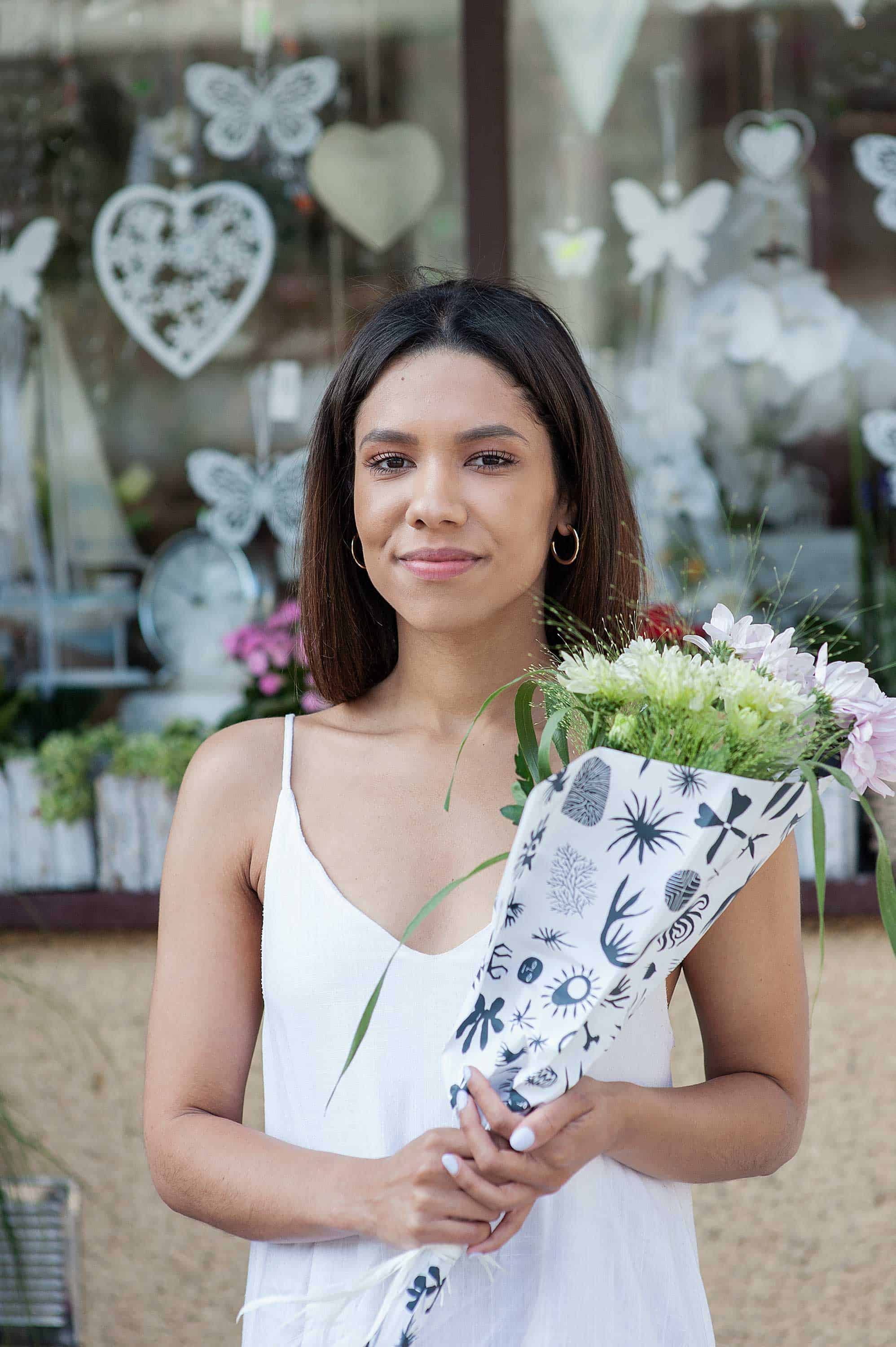
Not another public art festival, Art and the city, Gdańsk 2019
D.N.: The founding thesis proposed by the creators of the Non-festival – ” Art and the city” – is greatly underlined here.
M.R.: For me, this is the basis – taking the existing work of art and creating a new one. I invited Ada Zielińska, the author of the famous photo taken during the celebration of the National Independence Day (2018), not only to take up a game with a refined piece of art but to go beyond that as well. In all my actions the recipient is extremely important to me even if the work of art is put on a pedestal.
I don’t engage audiences in a workshop manner, but by using sophisticated art from museums I invite them to participate, to cross the boundaries of this work of art, to talk about it. By situating a casket there, we also animate the project. It won’t be a common workshop with the inhabitants, but they will be aware that the casket is made for them, that we’re interested in their opinion, in what they think about it all. On the other hand, many other Non-festival’s projects will involve people directly. I know that Honorata Martin is transferring a very interesting project to Dolne Miasto, which she has carried out with refugees in the south of Europe.

Not another public art festival, Art and the city, Gdańsk 2019
D.N.: Did the curator collective collaborate or did you develop projects separately?
M.R.: I worked alone with a group of artists whom I invited to design a common pavilion. It seems to me that apart from me, the rest of the curatorial group worked together. I’m probably the only person invited from the outside, the rest of the team are “Łaźnia”’s permanent collaborators.
D.N.: Does coming out with art to people have anything to do with your fashion background? This field also seems not to work when abstracted from society.
M.R.: This is a difficult question, because fashion is very heterogeneous today, from inclusive to exclusive stages. Fashion can be a work of art. Even brands creating ready-to-wear collections do projects on the runway or art galleries that are not designed to wear, but to express certain meanings. It’s a very complicated phenomenon. There are fashion houses that show on the catwalk what you can wear, but many of them treat the show or exhibition as a spectacle or performance, which of course helps later in the sale. It’s clearly visible, for example on the catwalks at Central Saint Martins, the Warsaw Fashion Department, or the Antwerp Royal Academy of Fine Arts, that a good designer, the one who may build the economy later, is the one who first of all makes something creative, not something that is ready to wear.
Paweł Włodarski, whom I invited to the project, graduated from Central Saint Martins, one of the most important schools in this field in the world. As a student, he created a fashion collection about the attachment of people to other people. It showed this pain, or another kind of feeling, that comes from sticking one man to another. He probably meant love affairs. In our project in Gdańsk, Paweł takes the woman’s suit up to the surrealist boundary. It was supposed to be a power-look in the 80s, and as a combination of a suit and a dress was supposed to enable a woman to exist in a practical business world. In our project, the suit will not be worn but will be dropped out of a woman. The performer, getting rid of it, will get the unisex or hermaphroditic suit, and only then will she be able to move freely. In fashion, its usefulness is not always the most important. It’s needed in the subway, but not necessarily on the catwalk or in a pure designer’s expression.
What I transfer from fashion to creating exhibitions and initiating the creation of works of art is beauty. I try to make my projects visually appealing. Before the element of reflection appears, I’m aiming above all to evoke delight. It’s always very important to me that my projects somehow absorb the viewer visually. It doesn’t have to be nice, but it has to be tempting. I always transfer this aspect from fashion to art and I am not afraid to create this affection in a viewer, as I will in the “Gdania” project. I didn’t want the works to be conceptual in the sense of formal minimalism – there will be flowers, and shipyard clothing will be studded with gold and crystals.

Not another public art festival, Art and the city, Gdańsk 2019
Niefestiwal. Miasto i Sztuka
19 – 28 July
Gdańsk / Dolne Miasto
“Łaźnia” Centre for Contemporary Art
Artists: Alicja Biała, Bolesław Chromry & Magdalena Sawicka, Mirella Von Chrupek, Oskar Dawicki, Justyna Górowska, Filip Ignatowicz, Marcin Janusz, Agata Królak, Honorata Martin, Luka Rayski, Open Group, Ada Zielińska, Mariusz Waras, Paweł „Paulus” Mazur I Dariusz „Brzóska” Brzóskiewicz, Patryk Hardziej, Edgar Bąk, Ola Niepsuj, Katarzyna Bogucka, Dawid Ryski, Paweł Włodarski, Dj Wika, Próżnia, Gnojki, Kwiaty, Kalafior Derambo, Yowee I O`Beats, Siksa;
Curatorial collective: Kinga Jarocka, Anna Szynwelska, Michalina Domoń, Krzysztof Kucharczyk, Marcin Różyc;







